My experience of training for 54 hours with Kramnik and Gelfand
After the success of the first Kramnik Microsense chess program in August 2019, a second camp was held. This time in Chennai, with more than twice the number of kids - 14 in all and two trainers - Kramnik and Gelfand. Each day would be filled with six hours of learning from the chess greats. In all the 13 students were in Chennai and got to spend 54 hours of training with Vladimir and Boris. There was one boy, who couldn't make it to Chennai because of an accident. He lay on his bed in Mumbai with a plaster on his leg. Health-wise, Aditya Mittal was not in the best possible shape for the camp. But because of his enthusiasm and willingness to learn, he absorbed everything like a sponge through remote live sessions. How was his experience and what did he learn? In this article Aditya shares it with our readers.
Kramnik, Gelfand and the Art of Opening Preparation
by IM Aditya Mittal
When I came to know I was selected for the Microsense Kramnik Gelfand Camp, I was thrilled. To work for 10 days with two of the greatest chess players ever, the thought in itself had me ablaze with excitement.
And so it began on 8th of January 2020. For the first five days, our group would be working with Kramnik. All of us were predominantly either 1.e4 or 1.d4 players, yet Kramnik decided to teach us an opening repertoire on 1.Nf3. Why so? He explained that it is a very flexible opening which helps in broadening your general understanding of the game. Leaving behind 20-30 moves of theory, players are almost always on their own within 10 moves in the Reti.
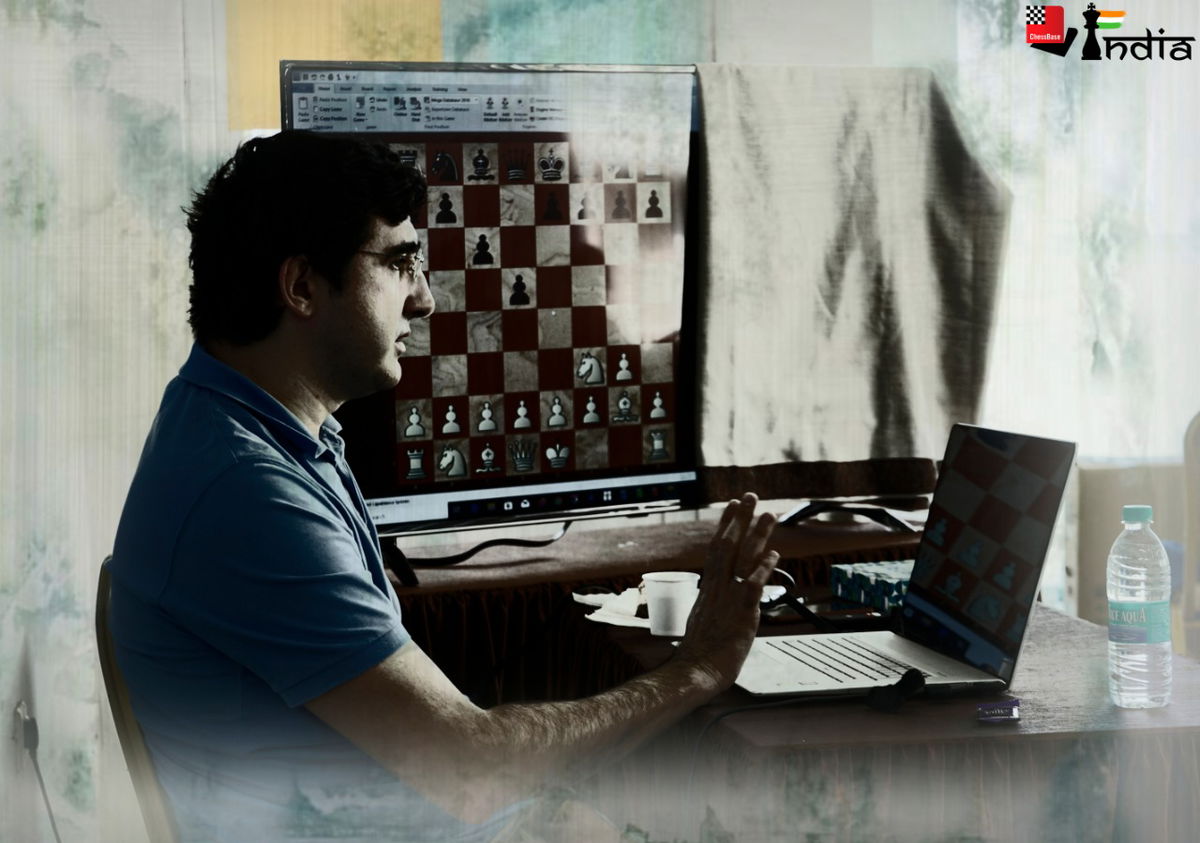
The basic idea of the opening is that White just wants a small pull and a playable middlegame, and rely on general positional understanding of the game instead of too much concrete opening theory. Concrete lines are of course key, but typical middlegames are more important in this opening system. The simplicity with which Kramnik managed to cover almost all this was remarkable.
White usually has the following plan: Nf3-g3-Bg2-0-0 and now then different systems- like d3-e4, d4, b3, c4, based on the opponent's reply. Of course, Black has many different ways to play against the Reti, a few of them hanging close on the edge of equality. Is that a disadvantage for White? Not at all! In fact, it is more of a headache to choose which system to play with Black. None of the lines seem to give full equality; White almost always has slightly better chances out of the opening.
1.Nf3 is also a very practical choice. The point is that if suppose Black plays 1...c5. Then he should be ready to face both 2.e4, transposing to Sicilian, and 2.c4, the English. If Black is a Dutch player (1.d4-f5) then he can't really go for something like 1...d5 as it is not the kind of structure he usually prefers. And maybe after 1.Nf3-f5 there are some advantages of not playing d4?!
So that's the general idea. But building a new repertoire involves more than just lines; throughout the 5 days Kramnik showed us many instructive games, mostly his own, and that was even better as he would often explain us his thought process during the game.
Kramnik vs Adhiban
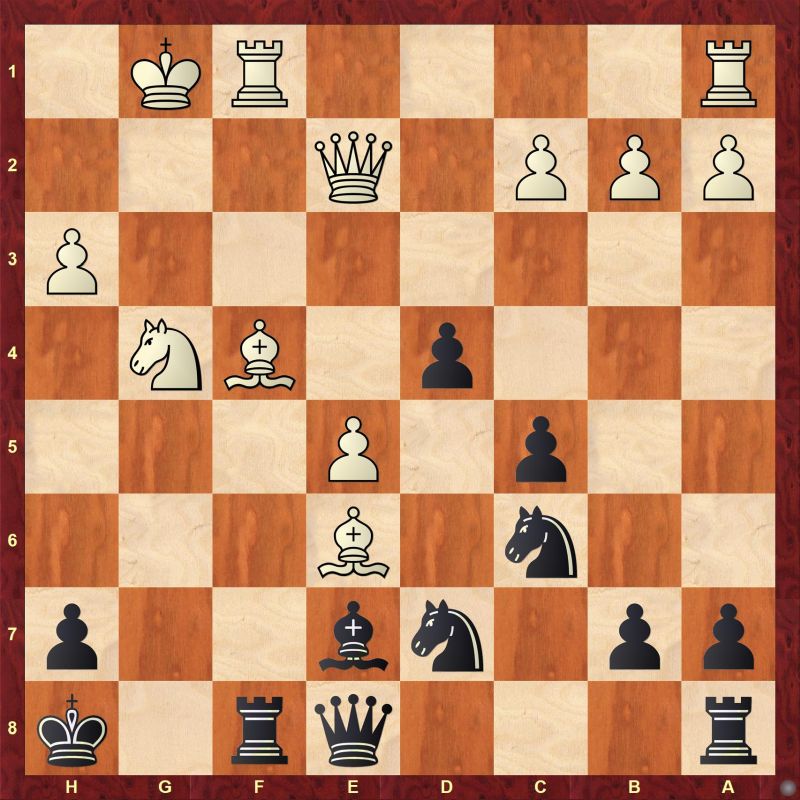
In this position, Black has the interesting 1...h5!? The idea is that if White's knight moves somewhere, Black will play 2...Qg6+ and pick up the bishop on e6. This move ...h5 wasn't played in the game, but this is one big variation Kramnik had to calculate at the board and so he gave it to us for thinking. So the question is - how should Black continue after ...h5?
Let us have a look at the position. Both's kings are heavily exposed. It seems that White's pieces are better poised for an attack but Black is ready to unleash his own; but first of all, the knight is threatened. What to do?
The engine finds the ingenious 2.Kh1! with the idea that white sacrifices his knight to bring his queen into the attack and then it almost seems like Black's king is roasted. But this is very difficult to find (it is quite possible though), and the move we mainly focused on was 2.Bxd7 Qxd7 3.e6 Qd5 and this is a big position, White has many options.
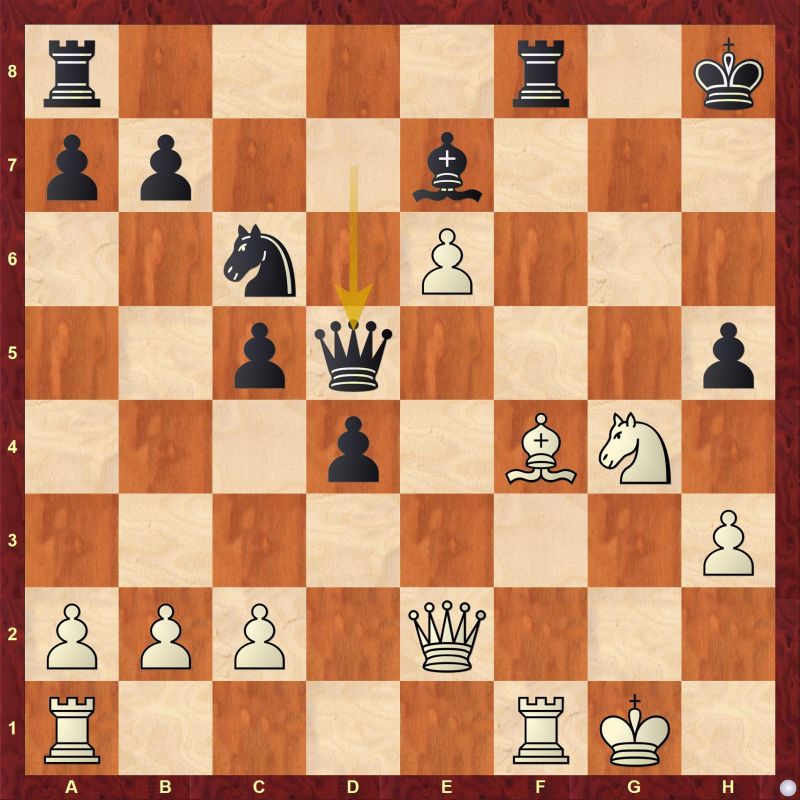
What are the candidate moves? It seems like Nh6, Ne5, Be5.
After 4.Ne5 Black simply plays 4...Rf5! protecting the h pawn and now although Black's king is exposed, on closer inspection it seems that White's monarch is the one who is in mortal danger. After 5.Nf7+ Kh7 the position is objectively roughly equal.
4.Nh6!? is a better try, but here Black has the nice counter attacking 4...d3! 5.cxd3 Rf6 and now how should White protect the e6 pawn? After 6.Nf7 Kg8 7.Rae1 Nd4 Black regains the pawn and is fine.
What about 4.Be5+!? This one seems to be the move. After 4...Nxe5, 5.Nxe5 Black's king has absolutely no protection, and White's pieces are storming in.
However, it is a good sign for the defender if the king of the attacking side is exposed! Black has clear counterplay after 5...Rxf1+ 6.Rxf1 Rg8+ 7.Kh2 Rg7! A calm move. Turns out White has no way to reach the king and after 8.Qxh5 Kg8 the position is equal.
And here it might strike; the best move is 4.c4! The point is simple: after 4...dxc3 5.Rad1 White has an overwhelming attack. We all know the maxim "Bring all your pieces in the attack!" yet how easy it may be to forget such things!
But it's not over yet; 4...d3! A great counterattacking resource, quite typical at the same time. When your queen is attacked you don't always have to retreat; sometimes counterattacking opponent's queen is an option!
5.cxd5 dxe2 6.Be5+!
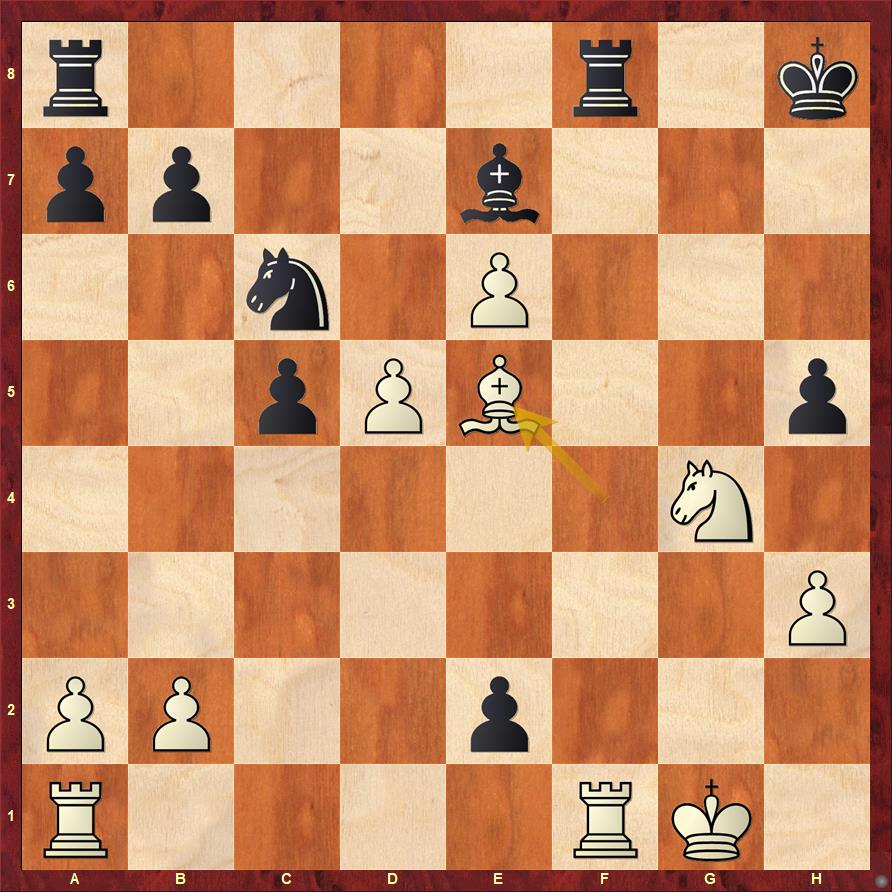
6...Nxe5! (6...Kh7 7.Rxf8 Rxf8 8.dxc6 bxc6 9.Ne3 Bh4 is a slightly strange idea by the engine, objectively it may be fine for Black though) 7.Rxf8 Rxf8 8.Nxe5 and again this is a moment of truth for Black - how can he continue the resistance?
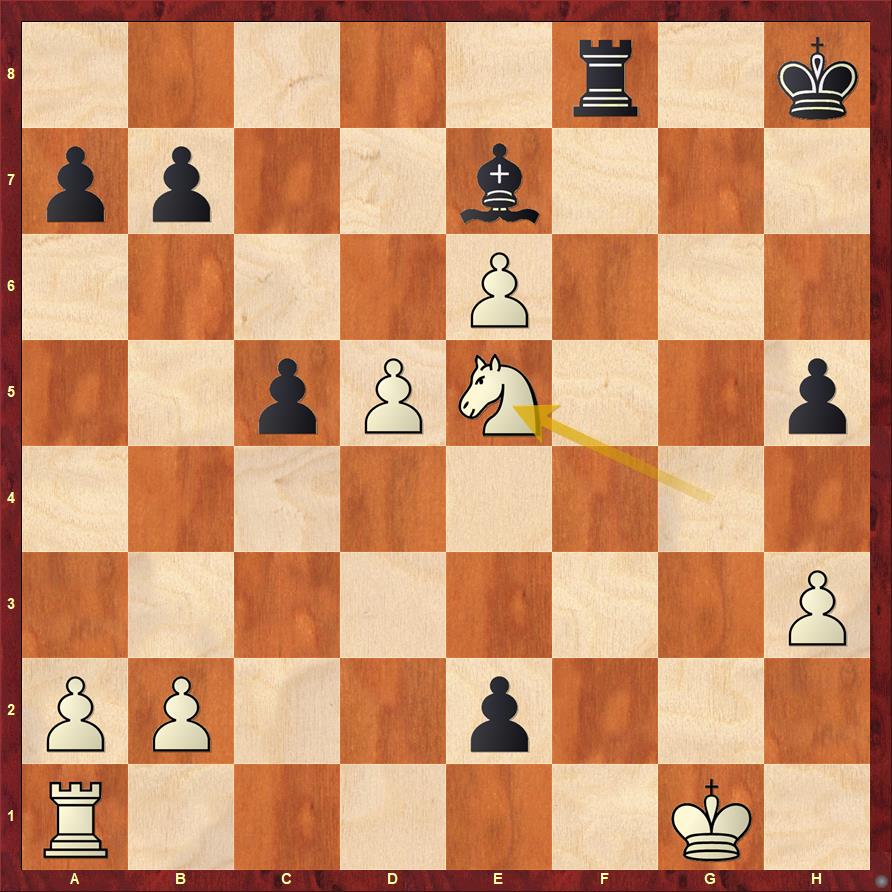
8...Rg8+ 9.Kf2 e1=Q is witty, but after 10.Kxe1 Rg1 11.Kf2 Rxa1 12.Ng6 White's knight and connected passed pawns will prove stronger than Black's rook.
Black must play 8...Kh7! A calm prophylactic move threatening to play Rd8 (earlier there was Nf7). After 9.Re1 Rd8! 10.Nd7 Rg8+! 11.Kf2 Rg5 Black holds with accurate play.
A rollercoaster ride, what crazy complications! But it was not all calculation, there were many positions for endgame technique that we analyzed in depth.
Kramnik vs Tomashevsky
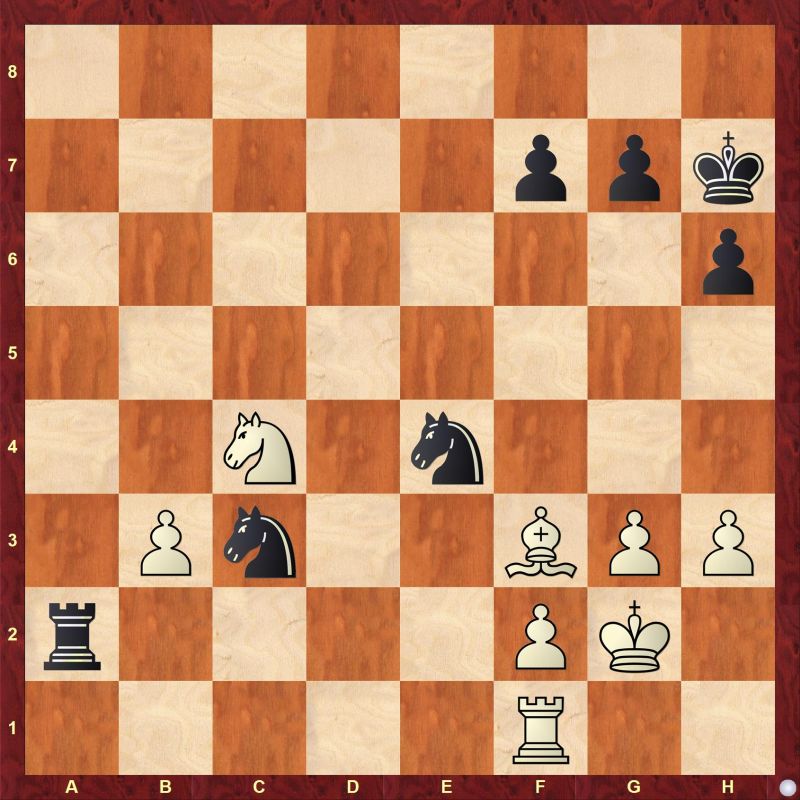
Kramnik vs Nepomniachtchi
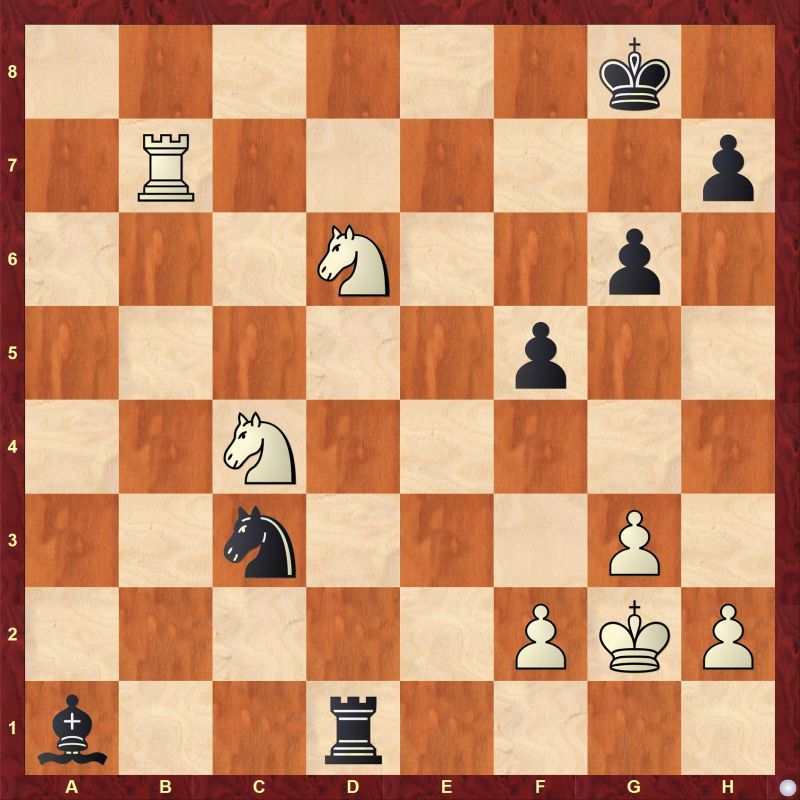
Kramnik vs Piorun
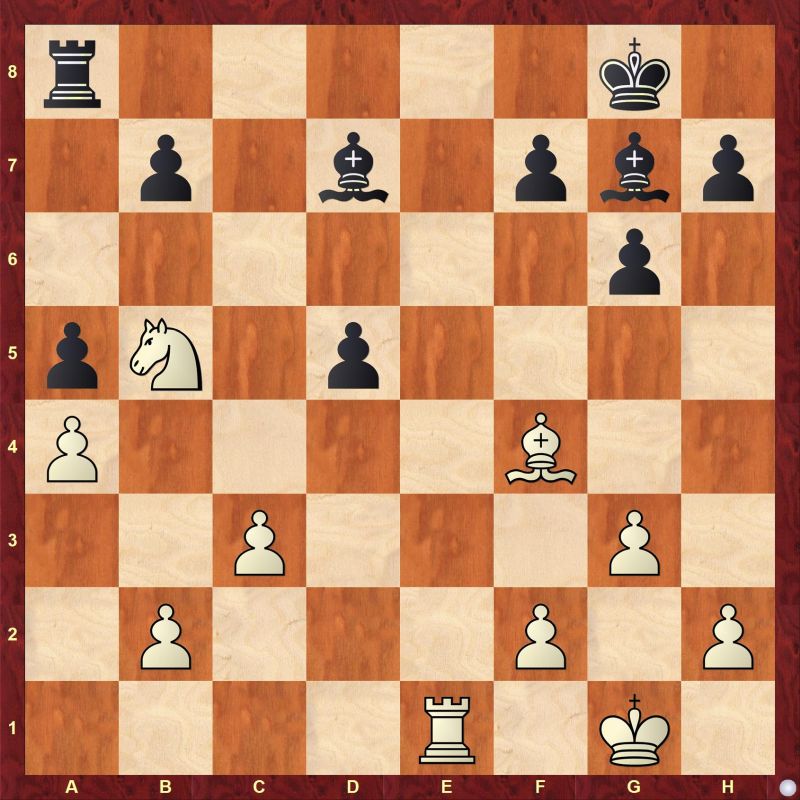
13th January was a rest day (No-castling tournament!), and on 14th we were back to intensive training, this time with Gelfand. Our topic of working was Slav with the Black side. (1.d4 d5 2.c4 c6)

The basic position of our working started after 1.d4 d5 2.c4 c6 3.Nf3 Nf6 4.Nc3 e6 the Semi Slav. It is a very sound opening, where Black strengthens his centre and now wants to develop his pieces. We covered all kind of different White options here, 5.Bg5, 5.e3, 5.g3 and 5.Qd3.
Gelfand always seemed very energetic and he did not exactly tell us what to play, rather he gave us directions to work on. According to him, the main aim of the camp was not to give us a set opening repertoire but to show us different ideas and what top level preparation looks like. We have to go very deep, do lots of hard work, and understand the concepts and not just memorize the lines.
Of course, like Kramnik, the main topic was openings, but it was not at all limited to that; there were many middlegames/endgames where Gelfand asked us to make our decisions.
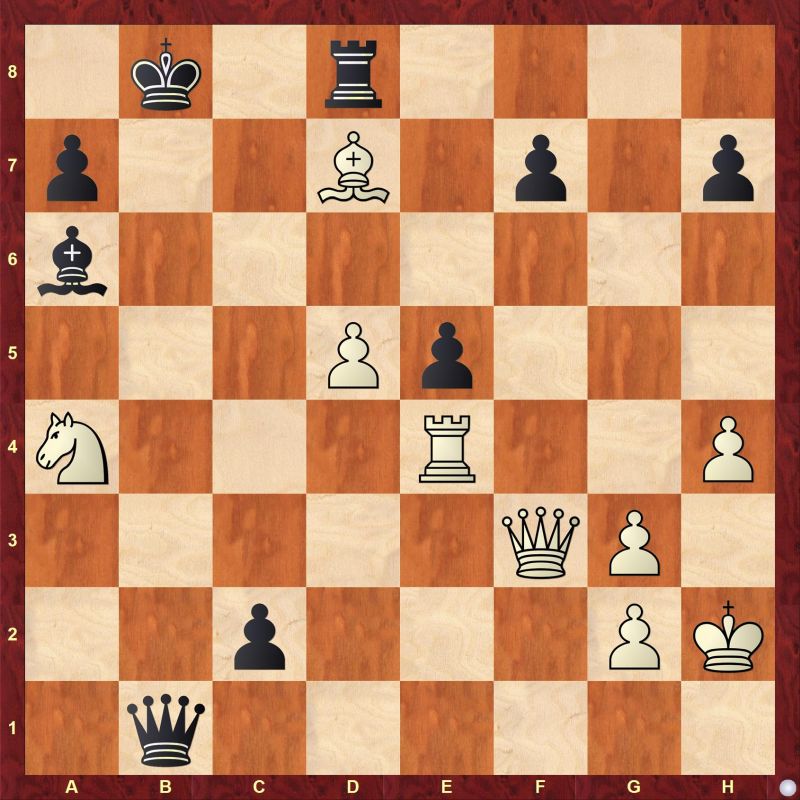
A very complex position. Black is ready to make a new queen, but black’s king is seriously exposed. It seems like white’s pieces are almost ready to launch a mating attack, but in these positions, you have to be very concrete. The difference between two moves is huge!
There are some options like Qc3, Qf6 and Nc5. Let's have a look at them:
1.Nc5 c1=Q 2.Rb4 Qxb4 3.Nxa6 Kb7 4.Nxb4 Rxd7 leads nowhere. What about 1.Qc3!? After the natural 1…c1=Q 2.Rb4+ Bb7 3.Qxe5+ Ka8 4.Nb6+! axb6 5.Ra4 Ba6 6.Bc6+! it seems White should be winning. However, we should stop and consider Black’s options. 1…Rxd7! is another candidate move; Black first removes the attacker, and now is ready to make a queen. 2.Rb4+ Bb5! It turns out that White’s attack isn’t good enough.
So, by the process of elimination, we arrive at 1.Qf6! attacking Black’s rook. Now, if 1…Rxd7, White first gives the intermediate check 2.Qh8!+ (2.Qxe5+ Rc7) 2...Kc7 (2...Bc8 3.Rc4) 3.Qxe5+ Kc8 4.Qc3 Rc7 5.Nc5! followed by mate shortly.
The most important line is 1…c1=Q 2.Qxd8 Bc8. It seems like Black has safeguarded his king, and is now just ready to give a mate on h1. And here is the beautiful point: 3.Re1!! and Black cannot avoid heavy material losses.
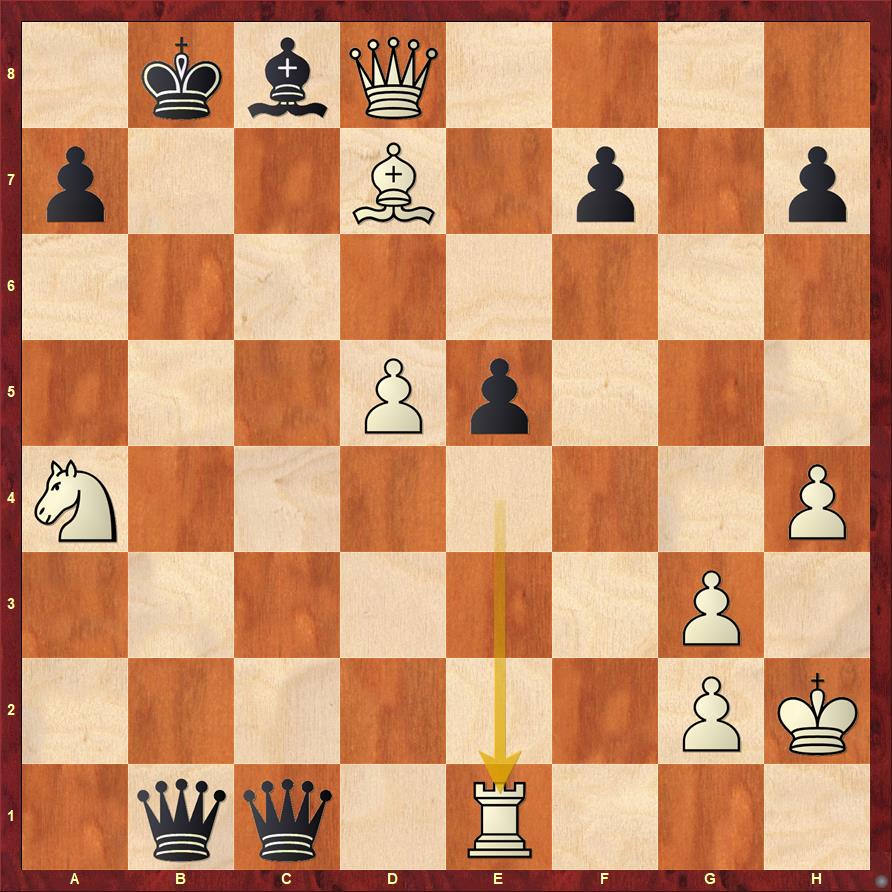
Gelfand vs Shirov
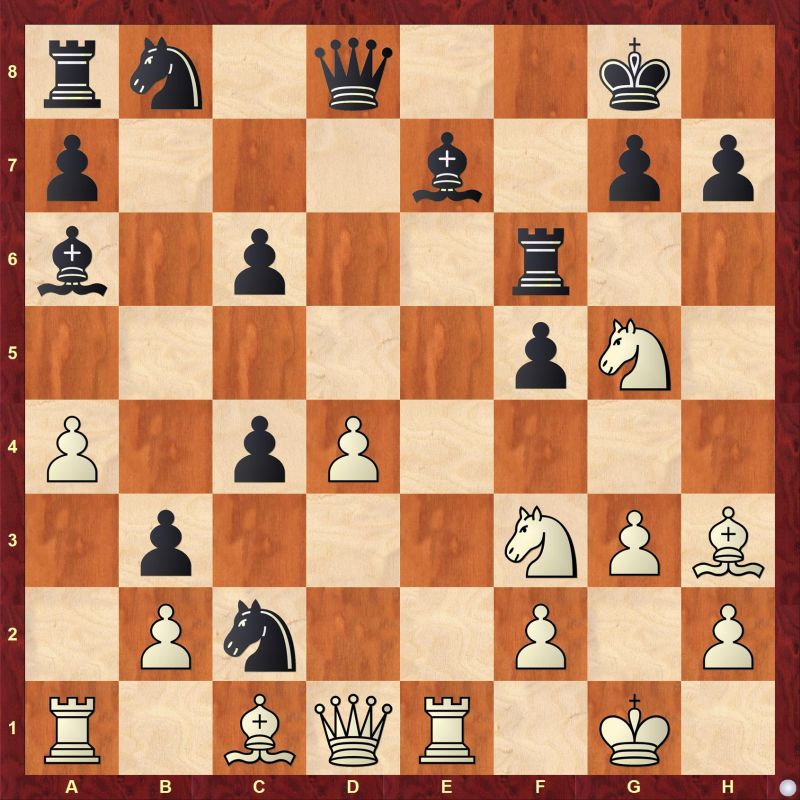
The position is very exciting and it must be calculated very accurately, a minor blip and the advantage could change hands. At first, the position looks bad for White. Black’s knight is forking White’s rooks and he is a pawn up. There’s no way to save the exchange; White must play energetically.
1.Nxh7! Kxh7 2.Ng5 Kg6
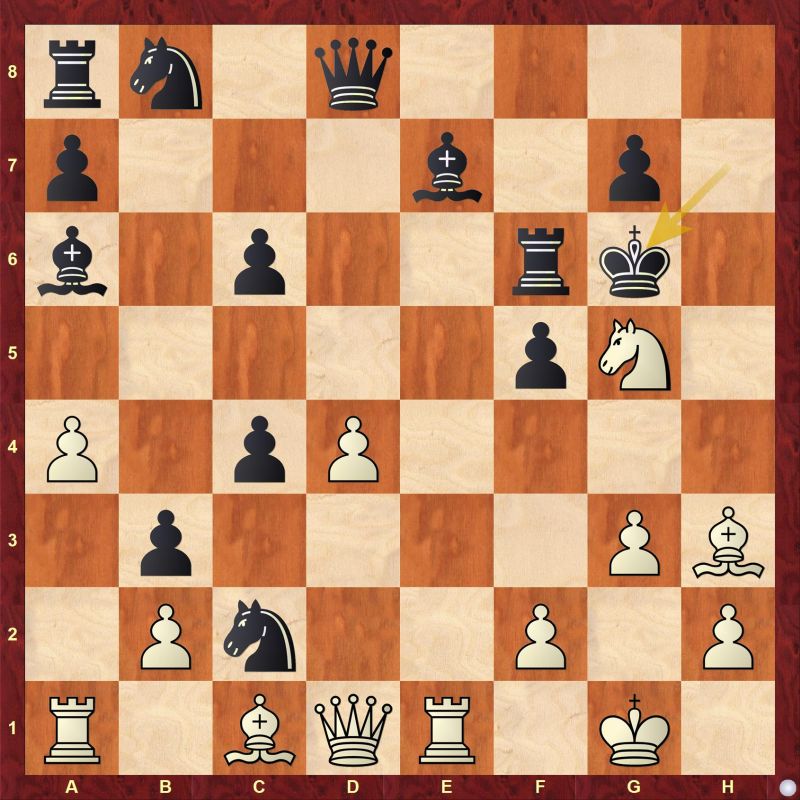
A critical position. White has some options. Ne6, Bg4, Bxf5 and Re6 being some of them.
3.Re6 Nxd4!;
3.Bxf5+ Rxf5! 4.Ne6 Nxe1! Black has too much material, so he gives his queen. After 5.Qg4+ Kf6 he is fine;
3.Bg4!? The idea of the move is to give Bh5+ and then Black’s king on h6 will be prey to some discovered check. After 3…fxg4 4.Qxg4 White’s queen comes into the attack; but with a calm head Black can easily find 4...Nxe1! Simply picking up the rook. After 5.Ne6 Kf7 Black is doing great. White has nothing better than forcing a draw with 5.Qe4+! Rf5, 6.Qe6+ Rf6 7.Qe4+. So, is the draw maximum White can get? No, there was another option.
3.Ne6! simply attacking the queen. 3...Qd5 falls into 4.Nf4! So Black plays 3...Qh8 attacking the bishop.
4.Bxf5+! Removing the defender! f5 pawn is clearly a very crucial element here since it stops White’s queen from entering to g4. 4…Rxf5 5.Qg4+ Kf6 6.Bg5+-; 4…Kf7 5.Ng5+ Ke8 6.Bxc2! bxc2 7.Qe2 Qf8 8.Nh7 with a nearly winning advantage.
The main move is 4...Kxf5, and now comes the point of the whole combination, 5.Nxg7+! Removing another defender! 5...Qxg7 6.Qh5 is mate; and after 5...Kg6 6.Rxe7 Qh3 7.Qe2! Black’s king is completely busted. Another excellent calculation exercise.
These 10 days were a great learning experience for me, and training with these legends has surely boosted my chess. I would really like to express my gratitude to Microsense Networks, ChessBase India and of course Kramnik sir and Gelfand sir!
Aditya Mittal, the boy who is eager to learn!
By Sagar Shah
At the Microsense Kramnik Gelfand camp we had 13 students at the venue (Chennai) and one in Mumbai! It was Aditya Mittal who couldn't travel to Chennai because of an accident. Being such a talented youngster it was important for him and his chess that he didn't miss out on the opportunity of learning from two of the greatest chess players on the planet. S. Kailasanathan, the MD of Microsense Networks, was keen that Aditya should get the best possible setup to learn remotely and for this he made arrangements for a high speed internet connection at the venue. Microsense, being world leaders in wi-fi, this was the perfect use of their technology. Amruta and I managed to create a setup where Aditya not only managed to see what was going on in the class, but he could also participate in it and answer the questions posed by Kramnik and Gelfand.
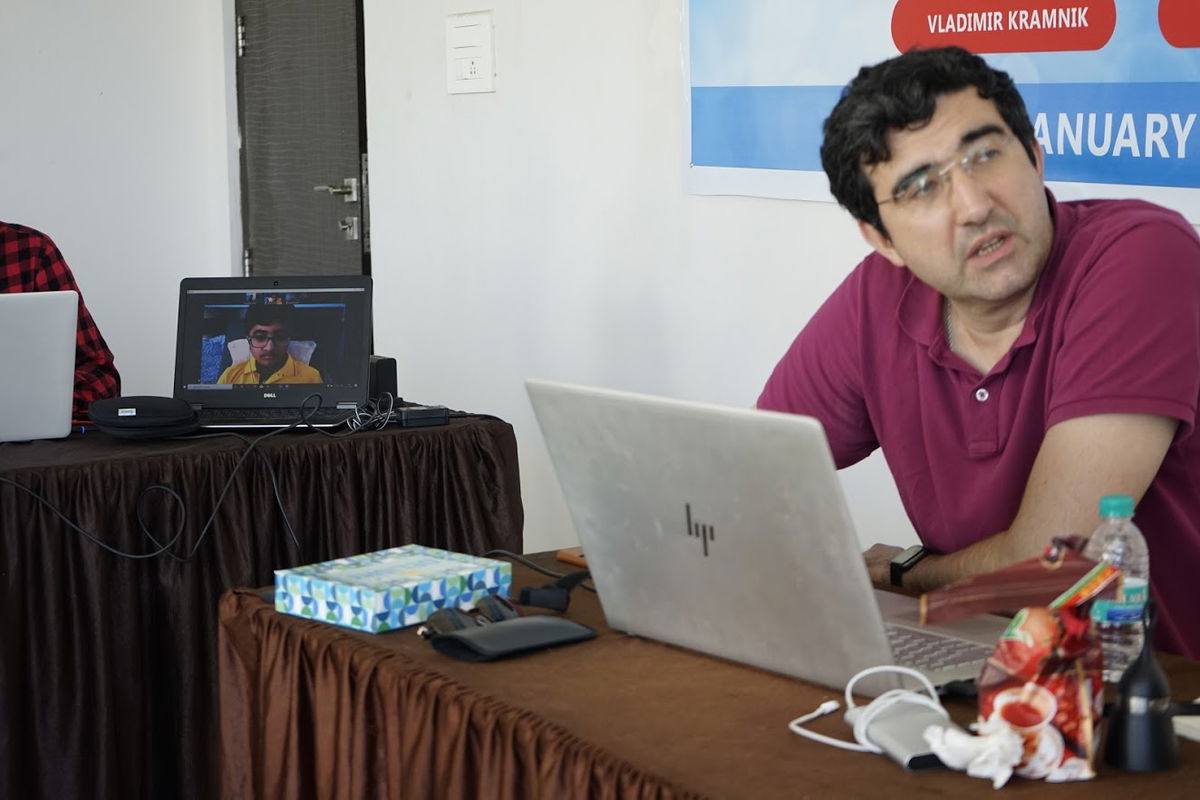


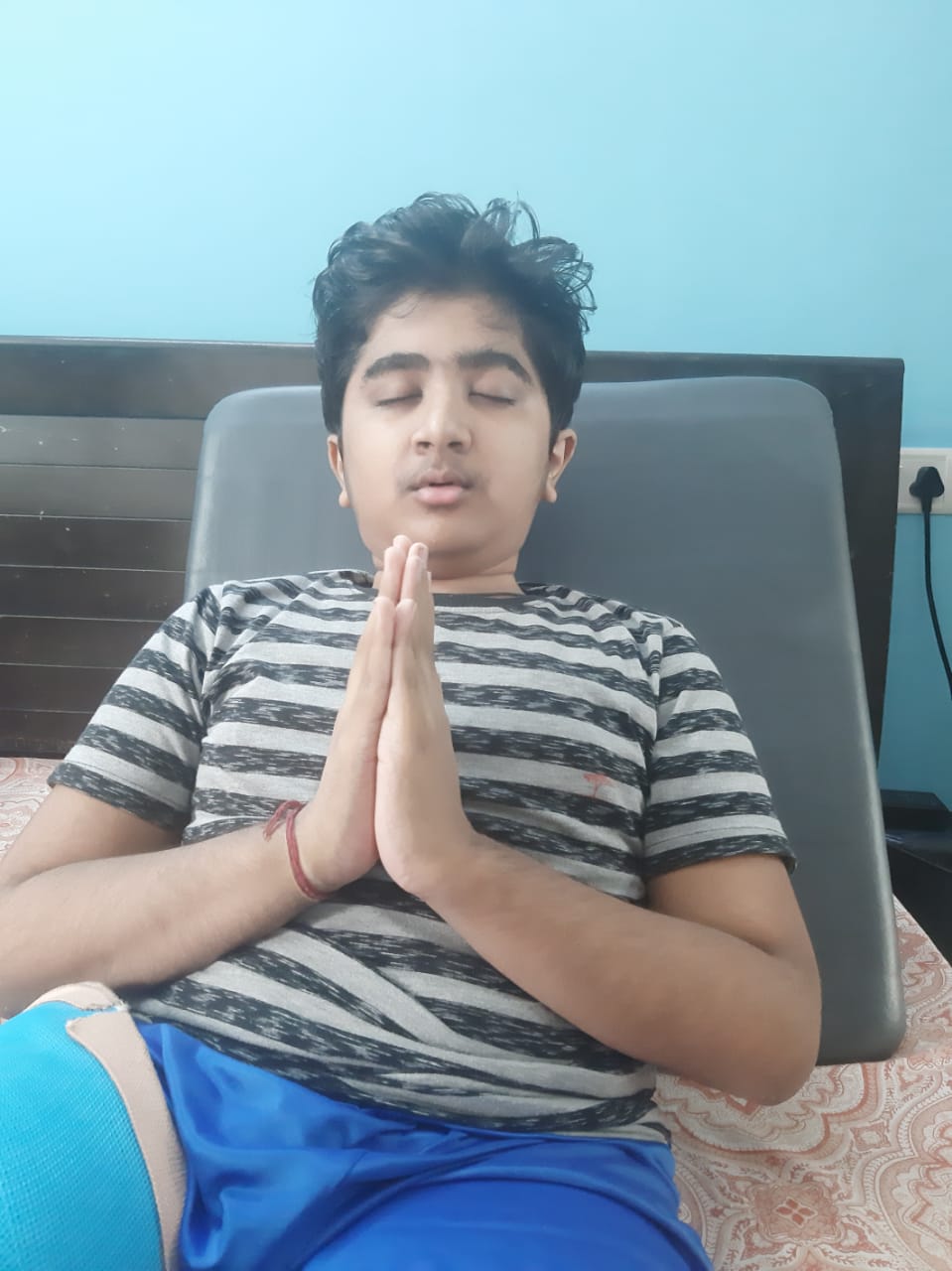
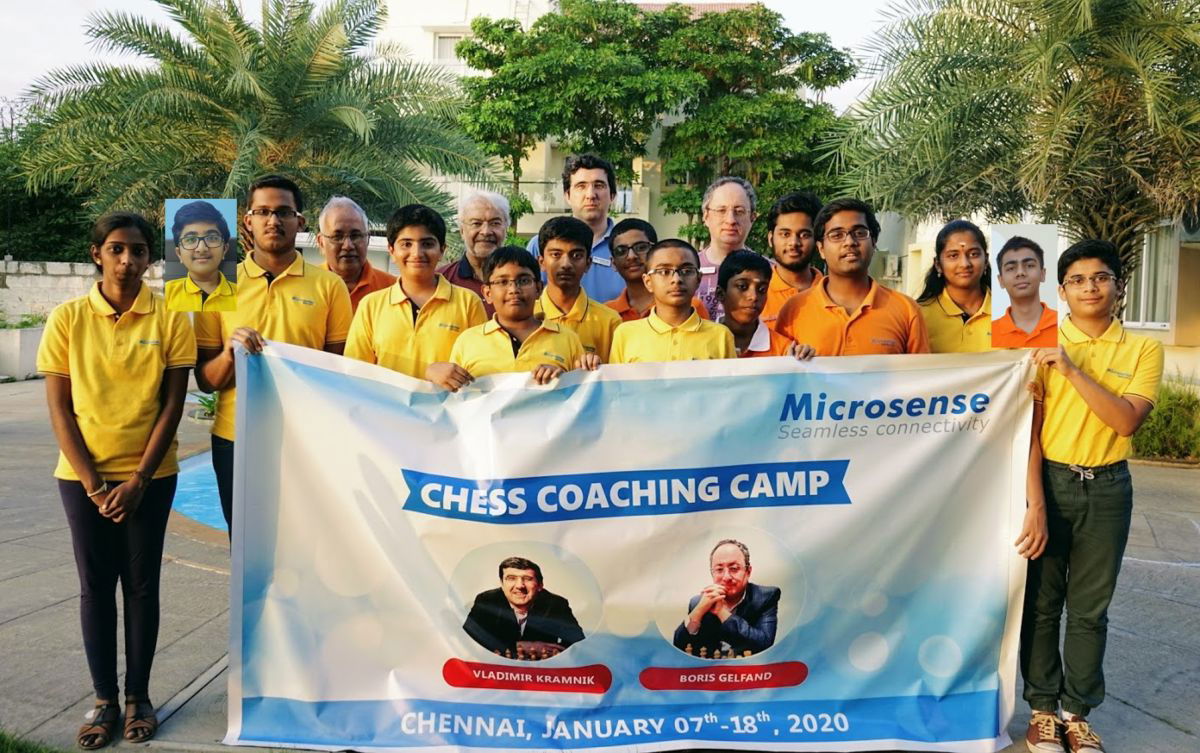
What really impressed me was Aditya's will to learn. On one of the days, he had a session with his doctor where his plaster had to be removed. Aditya messaged me in between the class asking, "Bhaiya, where is the link for live stream?" But aren't you at the doctor's clinic for your plaster removal? Well, it seems Aditya was waiting for the doctor in the hospital and just wanted to catch up on a few lines before his plaster was removed!
At the end of the camp, Kramnik and Gelfand both had very positive words to say about Aditya, not just in terms of his fighting spirit but also his chess talent. "He is really very strong!" was their opinion. Well, right now the only thing that comes in the way of Aditya and becoming a GM is his ability to travel to tournaments. But while that is difficult for Aditya to achieve, he is making the best use of his time preparing hard and getting ready for the big fight, whenever it will come! Aditya, you are an inspiration to the entire young generation of Indian chess. And we wish to see you where you belong - on the chess board! Wishing you a speedy recovery.
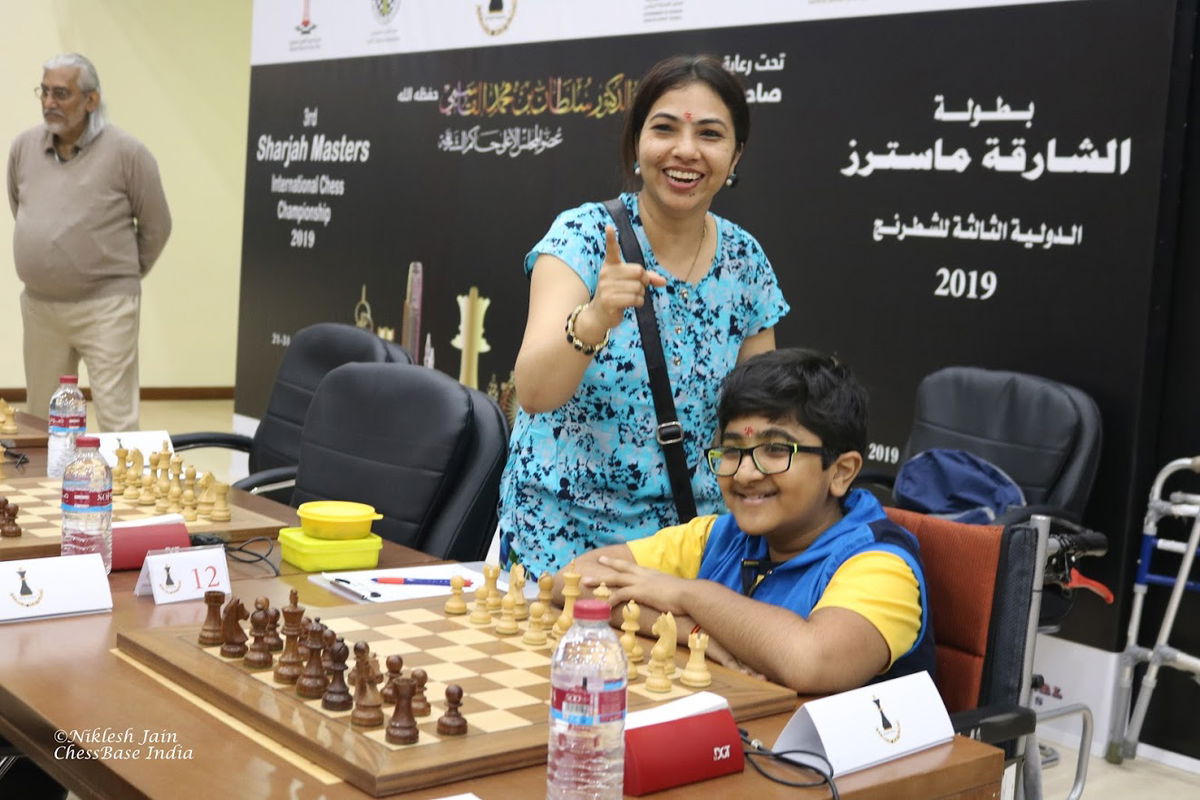
Read more:
Aditya's inspirational journey of becoming an IM at the age of 12























